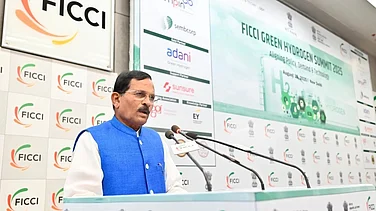India’s progress in forecasting heatwaves has led to a sharp drop in fatalities, but the country still struggles to fully prepare for the rising health burden due to a lack of granular medical data, the country’s top weather official said Friday.
Speaking at the India Climate Summit, Dr. Mrutyunjay Mohapatra, Director General of the India Meteorological Department (IMD), said while the country now provides timely seasonal and daily heatwave alerts, the ability to map heat stress and protect vulnerable populations remains limited.
“Deaths have declined from over 2,000 in 2015 to low double digits in recent years,” he said. “But morbidity remains high—and largely underreported.”
The gap, Dr. Mohapatra explained, lies in the absence of region-specific health data needed to correlate rising temperatures with actual medical outcomes. Without that, he added, “it becomes difficult to construct reliable heat stress indices or pinpoint high-risk zones from Rajasthan to Odisha to Tamil Nadu.”
India declares a heatwave when the maximum temperature soars 5°C above normal. But the IMD chief warned that high night-time temperatures are equally dangerous, preventing the body from cooling and increasing the risk of heat-related illness—particularly among older adults, children, and those with chronic conditions.
To improve risk prediction, he called for deeper collaboration between meteorological services, the health ministry, academia, and NGOs. “We need health sector data layered with AI, socioeconomic indicators, and local insights to make impact-based forecasts that go beyond temperature thresholds,” he said.
Dr. Harshal Ramesh Salve, Additional Professor at the Centre for Community Medicine at AIIMS, echoed the concerns, urging a return to traditional climate resilience strategies. Citing a local initiative in Gujarat, he noted how village panchayats distributed turbans and opened water sources during peak summer. “People have adapted to heat for generations—we must learn from them,” he said.
But adaptation, he added, must also address India’s rising burden of non-communicable diseases. “One in four Indians has hypertension. More than 10 percent live with diabetes. When combined with heat stress, this becomes deadly.”
Public health preparedness, he argued, must include long-term lifestyle interventions: “Encouraging daily physical activity, a fibre-rich diet and cutting salt intake should be part of our national response.”



























